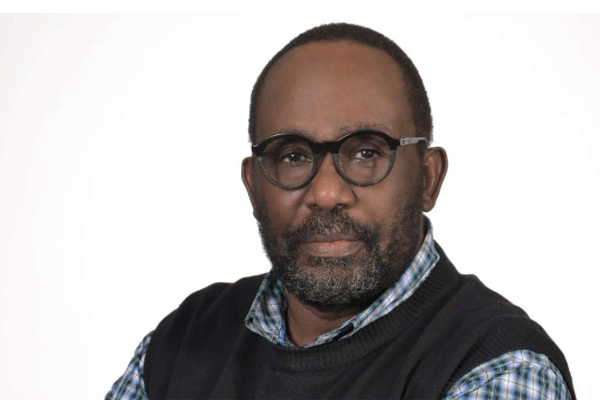Prime
1,500kms away, Ugandan footprints seen in the sand

Mr Charles Onyango-Obbo
What you need to know:
- The scale of change in Dar, even for someone last here in the early days of the ironfisted late president John Magufuli, is breathtaking.
The week found me in Tanzania’s commercial capital Dar es Salaam, where among other things, I spent some hours at CRDB, the country’s largest commercial bank.
It has assets worth TSh 13.2 trillion (USH 20 trillion), meaning if it were a Ugandan bank it would be two field lengths ahead of the competition. The last thing I expected was to find a Ugandan connection, but there it was: the Uganda National Social Security Fund (NSSF) is the third largest shareholder in the bank.
It conjured up images of other Ugandan connections to Dar and Tanzanian lands. President Yoweri Museveni is a child of Dar. So is Prof Mahmood Mamdani, former Monitor chief and legislator Wafula Oguttu; the founding former Inspector General of Government Augustine Ruzindana; and former Chief Justice Ben Odoki, to name a few that are still with us.
Many more have departed; former Deputy Premier and NRM Political Commissar Eriya Kategaya, Speaker and Foreign Minister James Wapakhabulo, former President Milton Obote, the Okello generals Tito and Basilio, the whole bang lot.
Tanzania has been the most influential force in Uganda’s politics for the last 45 years, but it doesn’t feel way until you peek into history. Everyone who has ruled it, and an overwhelming majority of those who wielded and wield power in the military and politics over this period, studied, lived in exile, or passed through there.
It is a city they wouldn’t recognise. The scale of change in Dar, even for someone last here in the early days of the ironfisted late president John Magufuli, is breathtaking. Looking out from the 11th floor of the CRDB bank headquarters, and more spectacularly from the top of the 28-floor Johari Rotana Hotel, the skyline has been dramatically reshaped.
On the ground too. Along Ali Hassan Mwinyi Road in the financial district where CRDB is located, that extreme gentrification and pimping one sees in places like Kigali, has taken shape – manicured lawns and fences, meticulous flower gardens, crisp roads and sidewalks, and nary a shred of rubbish in sight. Remarkable for a Dar es Salaam that once was fairly filthy, and where some areas still lag.
Unlike Kampala, this city looks immune to potholes. It is an immunity it developed recently in the ruthless years of Magufuli, who attacked them with a vengeance and paved even the most obscure side streets.
Pan-African history will assault you at a couple of street turns. The Rotana Hotel is a spitting distance from the Zanzibar ferry on Mansfield Street, parallel to Samora [Machel] Avenue, [Edward] Sokoine Drive, [Namdi] Azikiwe (he has three), [Ben] Kiwanuka, [Joshua] Nkomo, to name a few.
There is an avalanche of international consumer brands sweeping into Dar. It has surely and finally lost its socialist innocence, and settled comfortably in capitalism’s bed.
One thing and man who endures its founder Julius Nyerere. In several places, you will find a portrait of President Samia Suluhu Hassan, with that of Nyerere; gentle; keen-eyed, smiling, and moustached.
He was a little unthreatening man. When I shook his hands as an apprentice reporter in the early 1980s, I recoiled in shock. His hands were small, fragile, and baby-like.
Yet, rarely has a small unthreatening had such ferocious intellect and so great an influence. If there is a single leader who made the most impact on southern African liberation (Mozambique, Angola, South Africa, Zimbabwe) it was Nyerere.
Yet few men and women have had his prestige and power and exercised them with as much personal humility as he did.
Military ruler Idi Amin, mocked Nyerere for years, offering to marry him at one point, and challenging him to a boxing match, hoping no doubt that being a former champion he would obliterate Nyerere. The rubber met the road in 1979 after Amin 1978 invaded Tanzania’s border areas in Mutukula, and Nyerere struck back.
Gathering up Ugandan exiles in Tanzania and other countries behind them, the Tanzanian army pushed 1,500 kilometres all the way from Dar es Salaam, and on April 11, 1979, ousted Amin in Kampala, and installed the Uganda Liberation Front (UNLF) in power.
I sat there looking at one of Nyerere’s portraits and saw the magnitude of what he did in a new light. Yet, in this new Tanzanian society booming with strangely dressed millennials, the details are being lost. Few know much about Tanzania and Uganda in 1979. Names of generals of that war like David Musuguri and Silas Mayunga don’t ring a bell.
Nyerere, though, endures. There are inescapable reminders; Julius Nyerere International Airport, Julius Nyerere University of Agriculture, academies, colleges, and books. I wondered, if he had done nothing when Amin invaded in 1978, and left him in power in Kampala, what would have happened? Would Amin have ruled for 38 years? What would Uganda be today? That little smiling man spared us the burden of the answer.
Mr Onyango-Obbo is a journalist, writer and curator of the “Wall of Great Africans”.
X: @cobbo3



